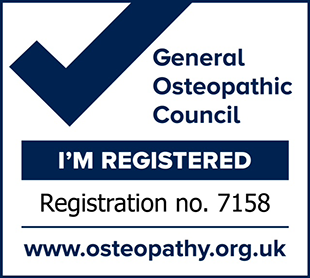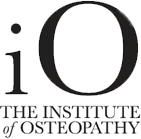Osteoporosis
Osteoporosis is a bone disease that leads to an increased risk of fracture. In osteoporosis, the bone mineral density (BMD) is reduced, bone micro-architecture is deteriorating, as the amount and variety of protein in bone is altered. Osteoporosis is defined by the World Health Organization (WHO) as a bone mineral density that is 2.5 standard deviations or more below the mean peak bone mass, (average of young healthy adults) as measured by DXA. The most common form of osteoporosis is in women after menopause, (primary type 1 or postmenopausal osteoporosis). Primary type 2 osteoporosis or senile osteoporosis occurs after the age of 75 and is seen in both females and males at a ratio of 2:1. Secondary osteoporosis may arise at any age and affects men and women equally. This form of osteoporosis results from chronic predisposing medical problems or disease, or prolonged use of medications such as glucocorticoids.
Osteoporosis risks can be reduced with lifestyle changes and sometimes medication. Lifestyle changes includes: diet, exercise and preventing falls. Supplements/medication include: calcium, vitamin D, bisphosphonates and several others. More naturally, Algae Seaweed may be taken, which has been proven, according to recent sources to reverse osteoporosis. (The user must however consult a physician before stopping all medication, or trying new products). Fall-prevention advice includes: exercise to tone wasting/weak muscles, proprioception-improvement exercises; equilibrium therapy. Exercise with its anabolic effect, may at the same time stop or reverse osteoporosis.
Signs and Symptoms:
Osteoporosis itself has no specific symptoms; its main consequence is the increased risk of bone fractures. Osteoporotic fractures are those that occur in situations where healthy people would not normally break a bone. They are therefore regarded as fragility fractures. Typical fragility fractures occur in the vertebral column, rib, hip and wrist. Debilitating acute and chronic pain in the elderly is often attributed to fractures from osteoporosis and can lead to further disability and early mortality. The fractures from osteoporosis may also be asymptomatic. The symptoms of a vertebral collapse, (“compression fracture”) are sudden back pain, often with radiculopathy, (shooting pain down the arm/leg, with subsequent pins and needles/numbness in the extemities) and rarely with spinal cord compression or cauda equina syndrome. Multiple vertebral fractures lead to a stooped posture, loss of height, and chronic pain with resultant reduction in mobility. Fractures of the long bones acutely impair mobility and may require surgery. Hip fractures in particular usually require prompt surgery, as there are serious associated risks, such as deep vein thrombosis, pulmonary embolism and mortality. Oestrogen deficiency, following menopause is correlated with a rapid reduction in bone mineral density, whilst in men, a decrease in testosterone levels has a comparable, (but less pronounced) effect.
Osteoporosis occurs in people from all ethnic groups, European or Asian ancestry however do have an increased predisposition for osteoporosis. Those with a family history of fracture or osteoporosis are at an increased risk; the inheritability of the fracture as well as low bone mineral density are relatively high, ranging from 25 to 80 percent. There are at least 30 genes associated with the development of osteoporosis. Those who have already had a fracture are at least twice as likely to have another fracture compared to someone of the same age and sex.
Chronic heavy drinking, i.e. alcohol, especially at a younger age, increases the risk of Osteoporosis significantly. In addition, smoking inhibits the activity of osteoblasts, (which build bone) and results in the increased breakdown of estrogen.
Vitamin D deficiency is associated with increased Parathyroid Hormone (PTH) production, which increases bone resorption, leading to bone loss. Malnutrition and physical activity also has an important and complex role in maintenance of good bone. Identified risk factors include low dietary calcium, phosphorus, magnesium, zinc, boron, iron, fluoride, copper, vitamins A, K, E and C and D where skin exposure to sunlight provides an inadequate supply. Excess sodium is a risk factor. High blood acidity may be diet-related and is a known antagonist of bone. Some have identified low protein intake as associated with lower peak bone mass during adolescence and lower bone mineral density in elderly populations. Conversely, some have identified low protein intake as a positive factor. Protein is among the causes of dietary acidity. Imbalance of omega 6 to omega 3 polyunsaturated fats is yet another identified risk factor. Underweight, inactive-bone remodeling occurs in response to physical stress and weight bearing exercise can increase peak bone mass achieved in adolescence. In adults, physical activity helps maintain bone mass and can increase it by 1 or 2%. Conversely, physical inactivity can lead to significant bone loss. Immobilization causes bone loss, for example, people who are bed-ridden or who use wheelchairs.
Hypogonadal states can cause secondary osteoporosis. These include Turner syndrome, Klinefelter syndrome, Kallmann syndrome, anorexia nervosa, andropause, hypothalamic amenorrhea or hyperprolactinemia. In females, the effect of hypogonadism is mediated by estrogen deficiency. It can appear as early menopause, (1 year). A bilateral oophorectomy, (surgical removal of the ovaries) or a premature ovarian failure can cause deficient estrogen production. In males, testosterone deficiency is a cause, for example: andropause or post surgical removal of the testes. Endocrine disorders that can induce bone loss include Cushing’s syndrome, hyperparathyroidism, thyrotoxicosis, hypothyroidism, diabetes mellitus type 1 and 2, acromegaly and adrenal insufficiency. In pregnancy and lactation, there can be reversible bone loss. Patients with rheumatologic disorders like rheumatoid arthritis, ankylosing spondylitis, systemic lupus erythematosus and polyarticular juvenile idiopathic arthritis are at an increased risk of osteoporosis, either as part of their disease or because of other risk factors, (notably corticosteroid therapy). Systemic diseases such as amyloidosis and sarcoidosis can also lead to osteoporosis.
Diagnosis:
The diagnosis of osteoporosis can be made using conventional radiography and by measuring the bone mineral density (BMD). The most popular method of measuring BMD is dual energy x-ray absorptiometry, (DXA or DEXA). In addition to the detection of abnormal BMD, the diagnosis of osteoporosis requires investigations into potentially modifiable underlying causes; this may be done with blood tests. Depending on the likeliho od of an underlying problem, investigations for cancer with metastasis to the bone, multiple myeloma, Cushing’s disease and other above-mentioned causes may be performed. Conventional radiography is useful, both by itself and in conjunction with CT or MRI for detecting complications of osteopenia, (reduced bone mass in pre-osteoporosis), such as fractures. However, radiography is relatively insensitive to detection of early disease and requires a substantial amount of bone loss, (about 30%) to be apparent on x-ray images. Dual energy X-ray absorptiometry (DXA, formerly DEXA) is considered the gold standard for the diagnosis of osteoporosis. Osteoporosis is diagnosed when the bone mineral density is less than or equal to 2.5 standard deviations below that of a young adult. This is translated as a T-score. The World Health Organization has established the following diagnostic guidelines: T-score -1.0 or greater is “normal”. T-score between -1.0 and -2.5 is “low bone mass”, or “osteopenia”. T-score -2.5 or below is osteoporosis.
Treatment:
Harrow Osteopaths_Wembley Osteopaths_Chelsea Osteopaths – The Sports Injuries Specialist – Registered Osteopath. Regulated: Harrow Osteopaths_Wembley Osteopaths_Chelsea Osteopaths – The Sports Injuries Specialist – Registered Osteopath. How osteoporosis_neck pain_back pain_ lower back pain is treated at Chelsea Osteopaths_Harrow Osteopaths_Wembley Osteopaths – The Sports Injuries Specialist – Registered Osteopath. Osteopathy or Acupuncture may not cure Osteoporosis, but it can certainly help promote blood flow and reduce pain.
If you are in Extreme Pain or are suffering, then call the Sports Injuries Specialist – Registered Osteopath for proven results immediately:
ZAHIR CHAUDHARY, BA (Hons), BSc (Hons), ND, M Ost.Med
EMAIL: emergencyosteopath@gmail.com
CONTACT: 0208 423 6209; 079 2100 4705
HARROW OSTEOPATHIC CLINIC, 9 LITTLETON ROAD, HARROW, MIDDLESEX. HA1 3SY.
DAVID LLOYD SUDBURY HILL, GREENFORD ROAD, EALING. UB6 0HX.
WEMBLEY OSTEOPATHS, 31 NORVAL ROAD, NORTH WEMBLEY, MIDDLESEX. HA0 3TD.
FITNESS FIRST OSTEOPATHS, 197 EALING ROAD, THE ATLIP CENTRE, ALPERTON, WEMBLEY, MIDDLESEX. HA0 4LW.
CHELSEA OSTEOPATHS, 208 FULHAM ROAD, CHELSEA, LONDON. SW10 9PJ.
WEB: https://www.sportsinjuriesspecialist.co.uk
Leave a reply →

